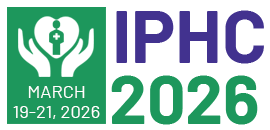Title : Geospatial clustering and environmental predictors of dengue a retrospective study in Delhi India 2015 2018
Abstract:
Background
Dengue caused by four different types of viruses is a major public health problem worldwide. With the rise in global temperatures
viz. projected to rise by ≥2 °C by the end of the century, the incidence of dengue is also expected to increase. The
epidemiological study of dengue was conducted in Delhi to understand the geographical distribution and identification of the
high-risk (hotspots) areas for dengue., for the period 2015-18. An attempt was also made to determine the environmental
correlates for the prediction of dengue.
Methodology
A retrospective spatial-temporal (ecological) study design was used using the four years (2015-19) dengue data of Delhi. The
spatiotemporal analysis was performed using inverse distance weighting and Getis-Ord Gi* statistic to know the geographical
distribution and identify the hotspot areas. A total of 4179 confirmed dengue cases extracted from the medical records were
included in the study. The environmental data of Delhi, collected from the Indian Meteorological Department of Pune, was
analyzed to know the seasonal variation and environmental correlates of dengue. The Generalized Linear Model(GLM) was used
to know the combined effect of meteorological factors such as temperature (average, maximum, minimum, difference), humidity
(relative humidity), and rainfall (total and cumulative) for the prediction of dengue.
Results
The annual trend of dengue cases declined, but the seasonal pattern of disease occurrence remained alike every year(2015-18).
Seasonal occurrence of dengue cases (4179) shows, the cases started emerging mainly in June-July during the monsoon season,
increased gradually to peak in September-October during the post-monsoon period, and thereafter, declined towards the lowest
during early winter (November-December). The proportions of dengue cases were recorded high among the males 57.3%
compared with females 42.6%, and differences were also recorded in all the age groups with more cases in age groups <15 and
16-30yrs. Mapping of the cases reflects the spatial heterogeneity in the geographical distribution. The geo clustering of cases
indicates the presence of a significantly high number of cases in the West, Southwest, South and Southeast districts of Delhi.
High-risk areas or hotspots were also identified in this region.
The Spearman correlation coefficient (r) of dengue was significantly high with the maximum temperature at lagged 2 and 3
months (0.695 & 0.694 at p<0.01), the minimum temperature at lagged 2 months (0.887, p <0.001). A significant negative
correlation was also recorded with the difference in monthly average minimum and maximum temperature at lag 1 and 2 (-0.675,
p< 0.01 and -0.663, p<0.01). Other environmental factors were also significantly correlated. The negative binomial regression of
GLM was a best-fit model for the prediction of dengue. The estimated β coefficients of predictors i.e. temperature difference at
lag 1, cumulative rainfall (lag0), relative humidity (lag 0) and maximum temperature at lag 2 were significant at p<0.01, and
maximum temperature at lag 2 was having the highest effect (IRR 1.198).
Conclusion
Dengue occurrence shows a significant association with age, sex and seasons. The spatial analysis identified the high-risk areas,
which can aid health administrators to take necessary action for prevention and better disease management. The findings of the
current study also highlight the considerable importance of the climate in assessments of dengue in Delhi. The increasing
temperature of two previous months and cumulative rainfall are the best predictors of dengue incidence in the August to
November months. It can be inferred that the vector control and dengue management program should be implemented at least 2
months ahead of the expected month of the dengue outbreak. The occurrence of dengue during September and October month
was recorded high, the healthcare providers should be prepared well in advance (July to August) for effective control of disease
transmission.



